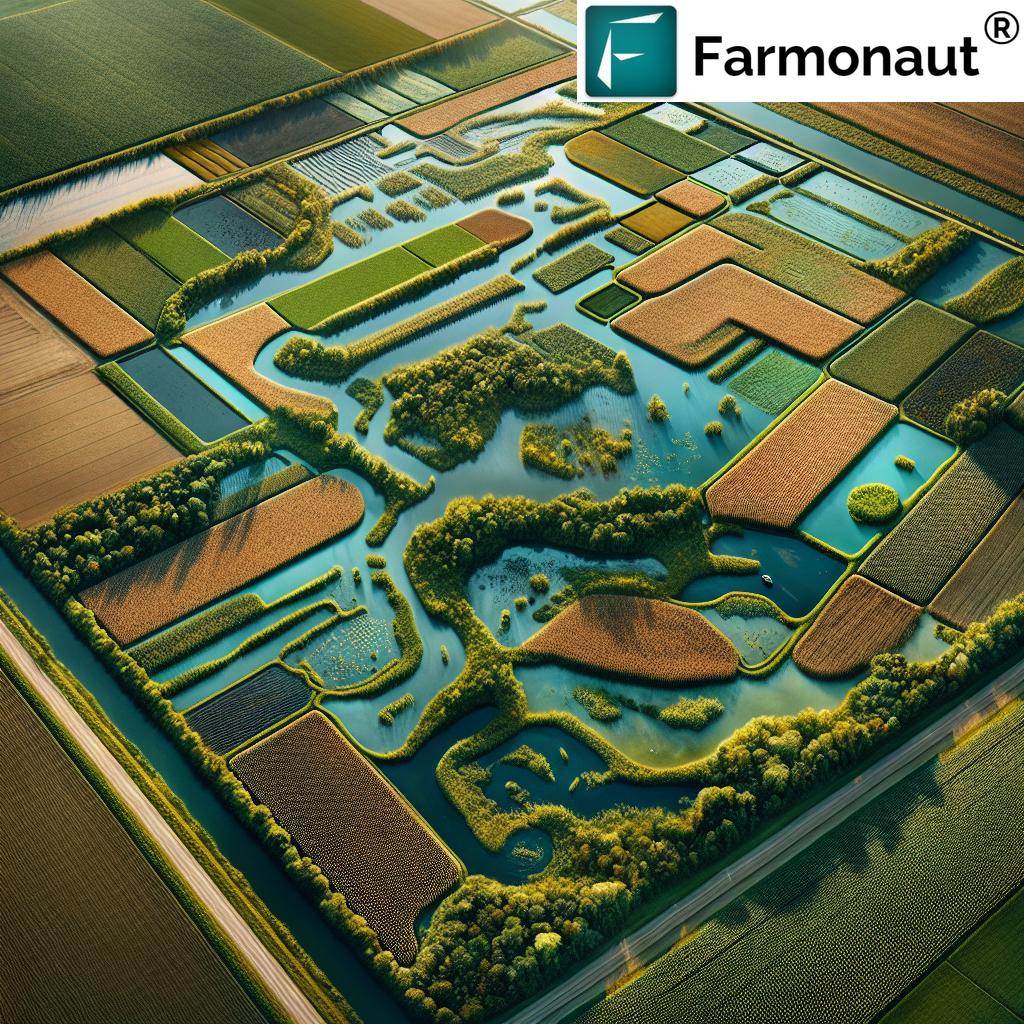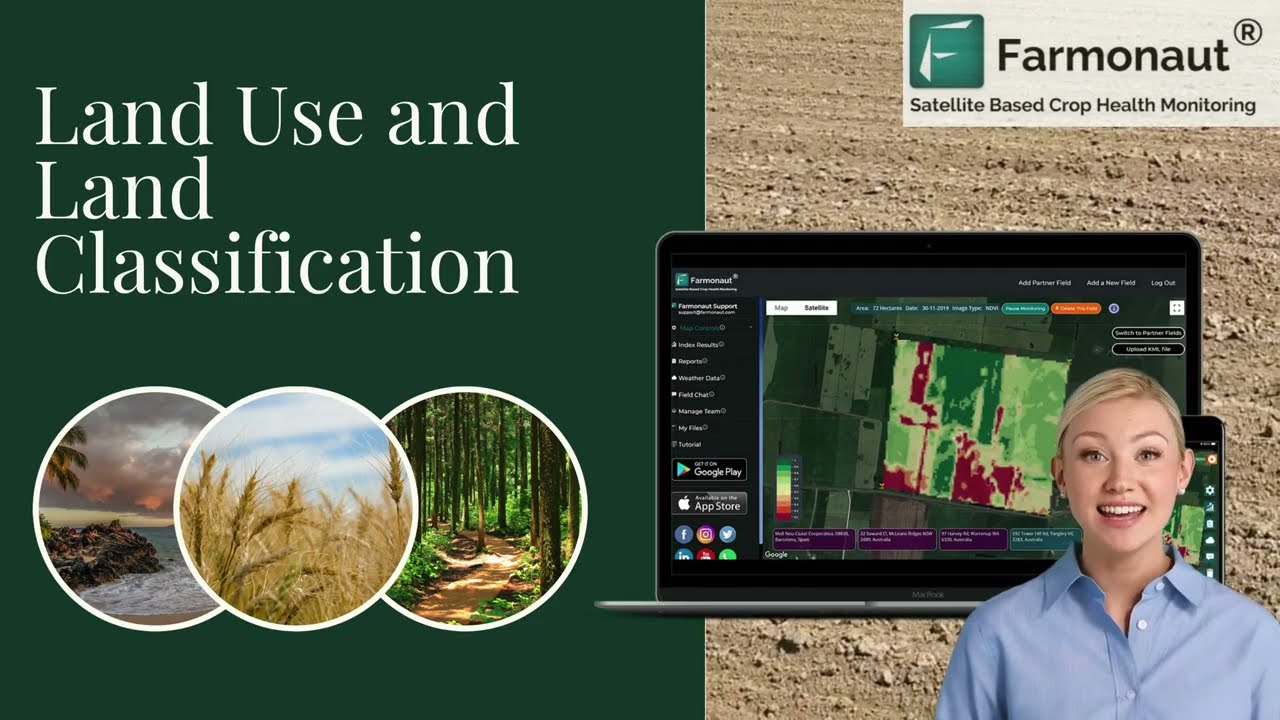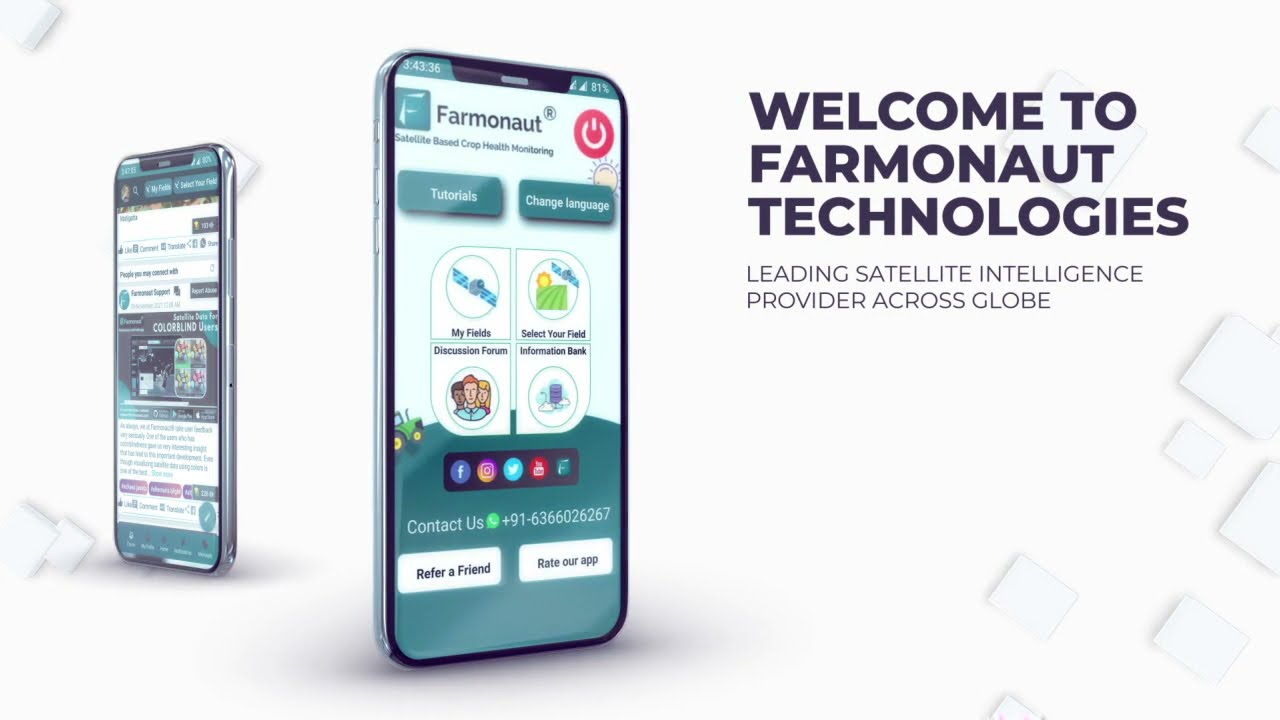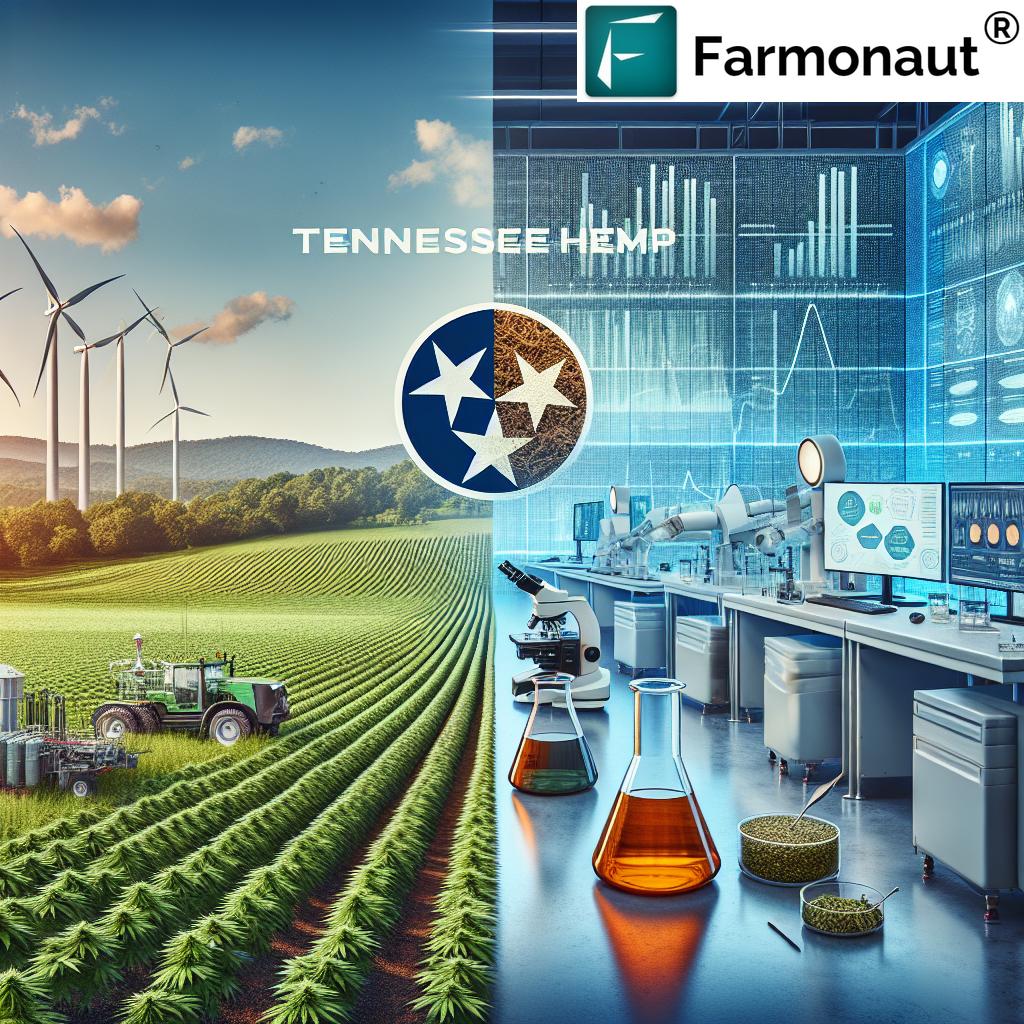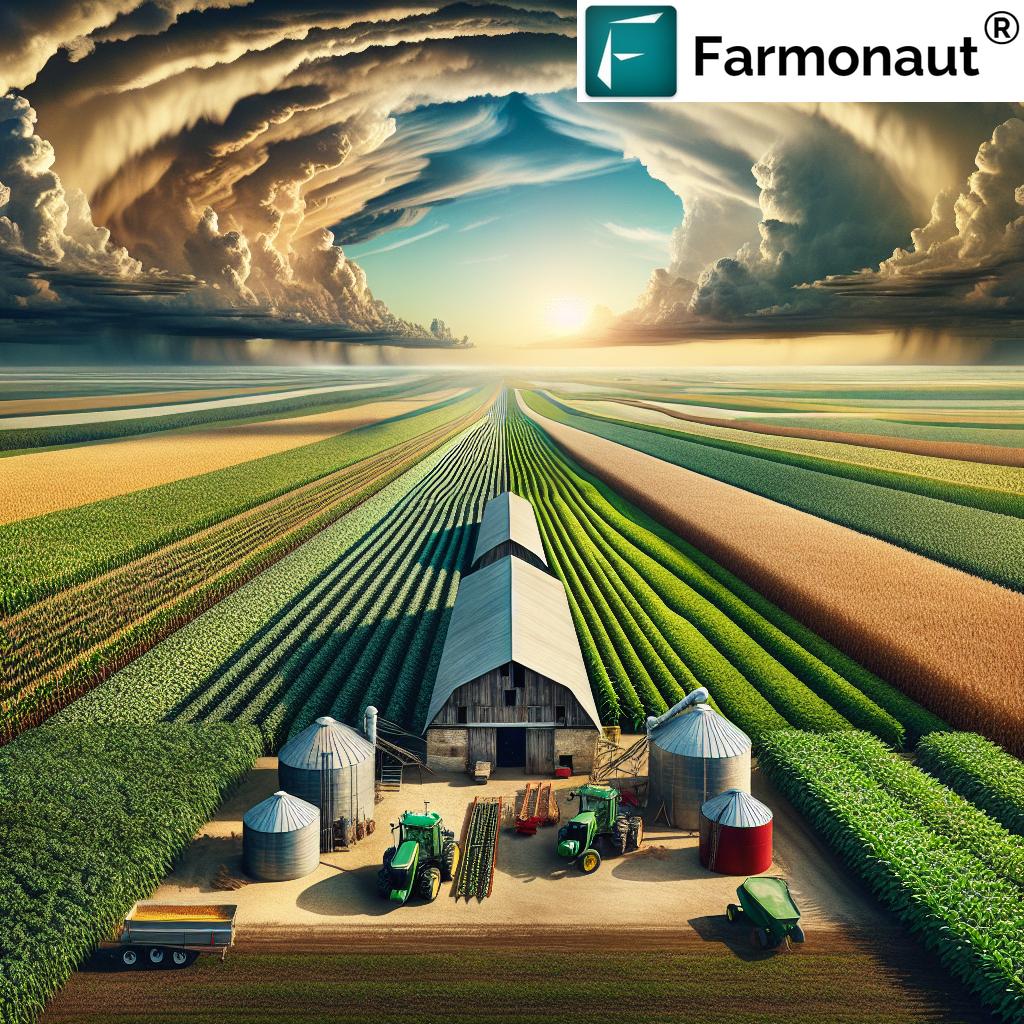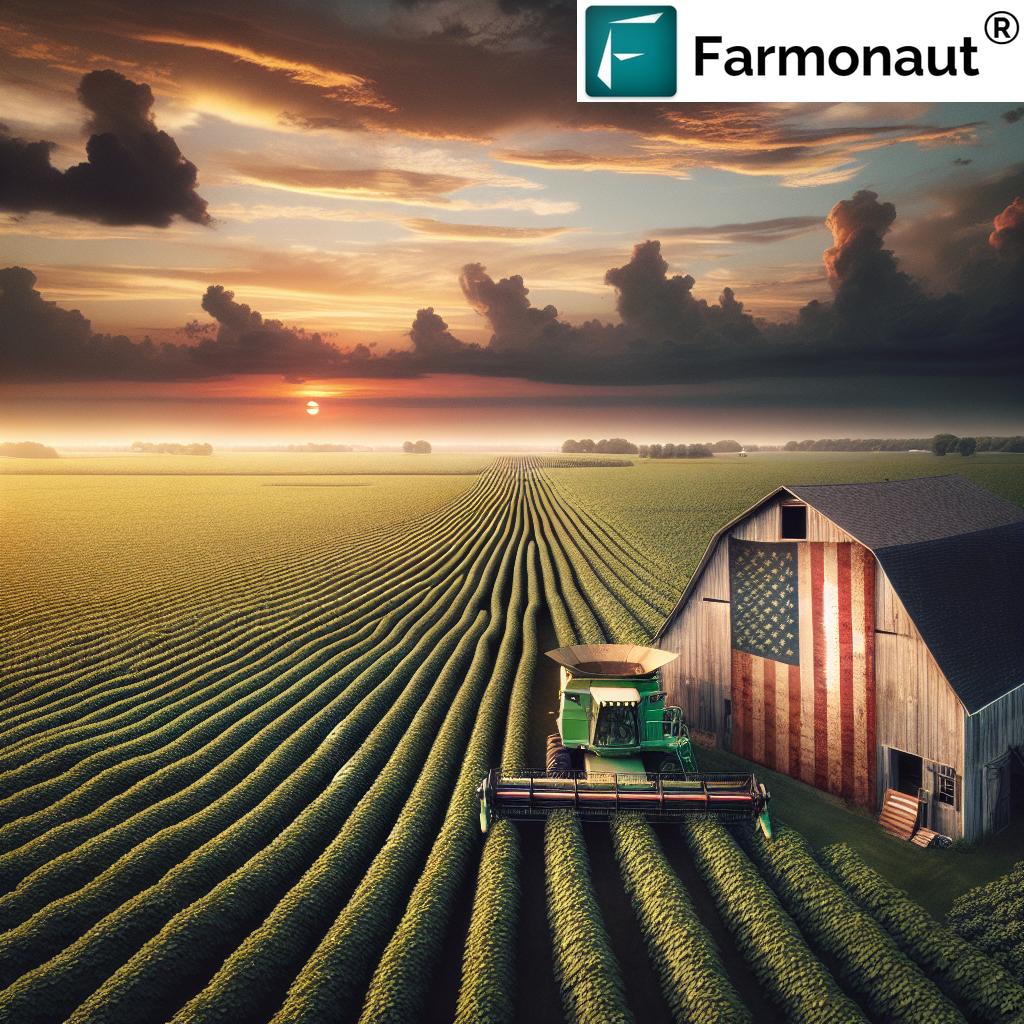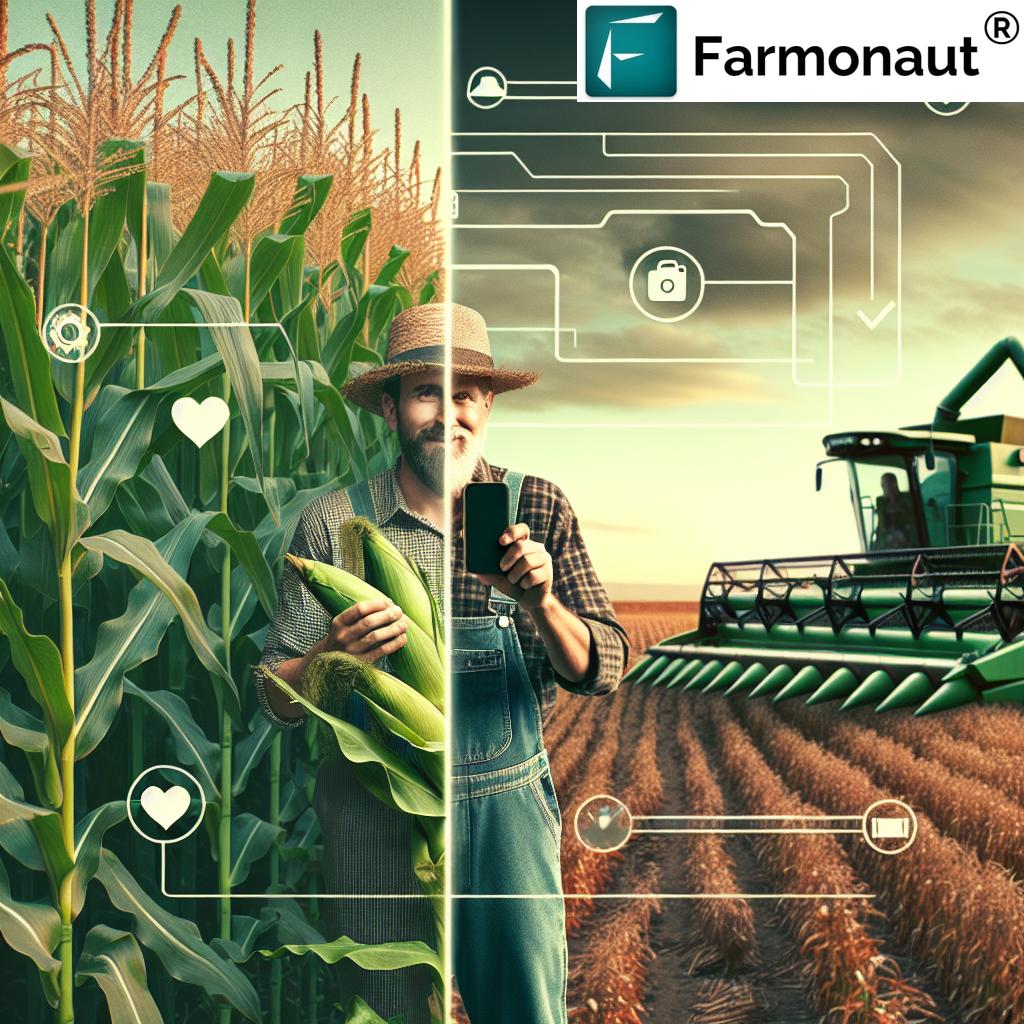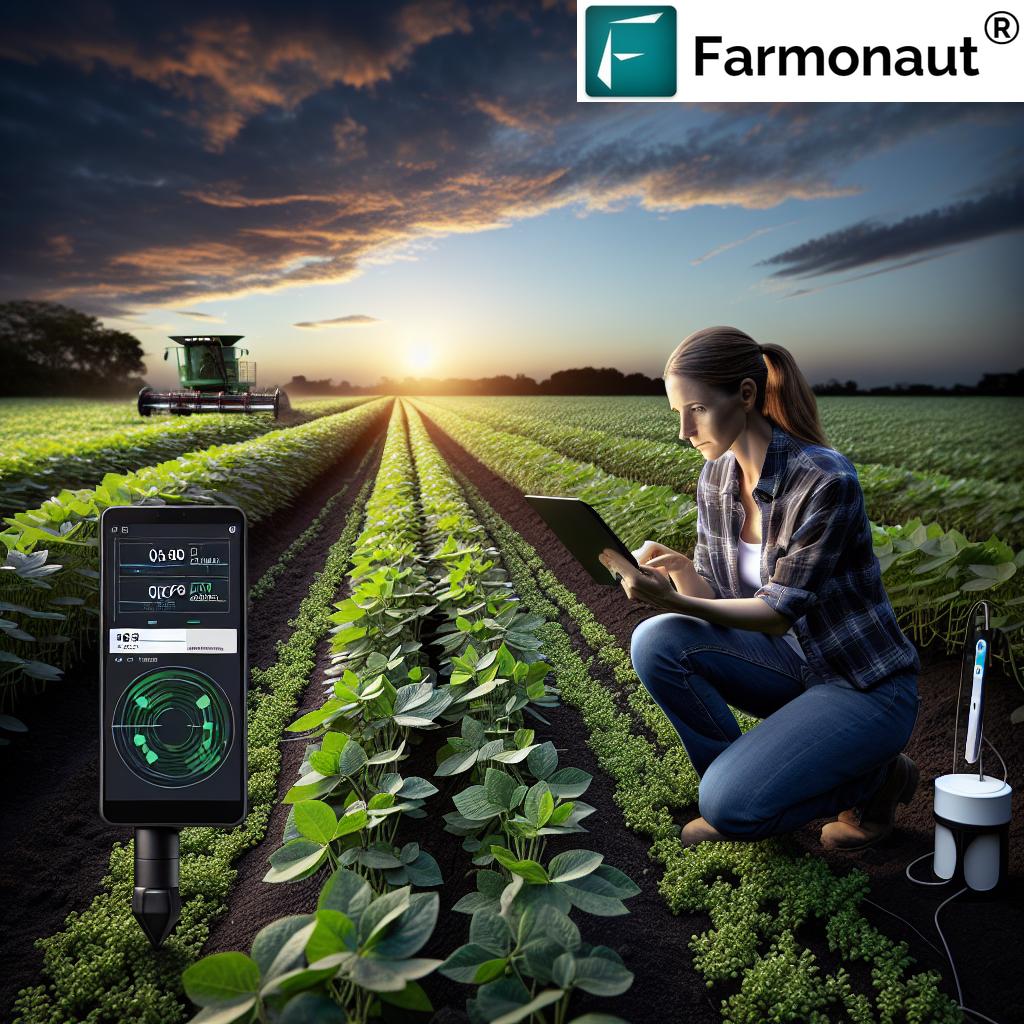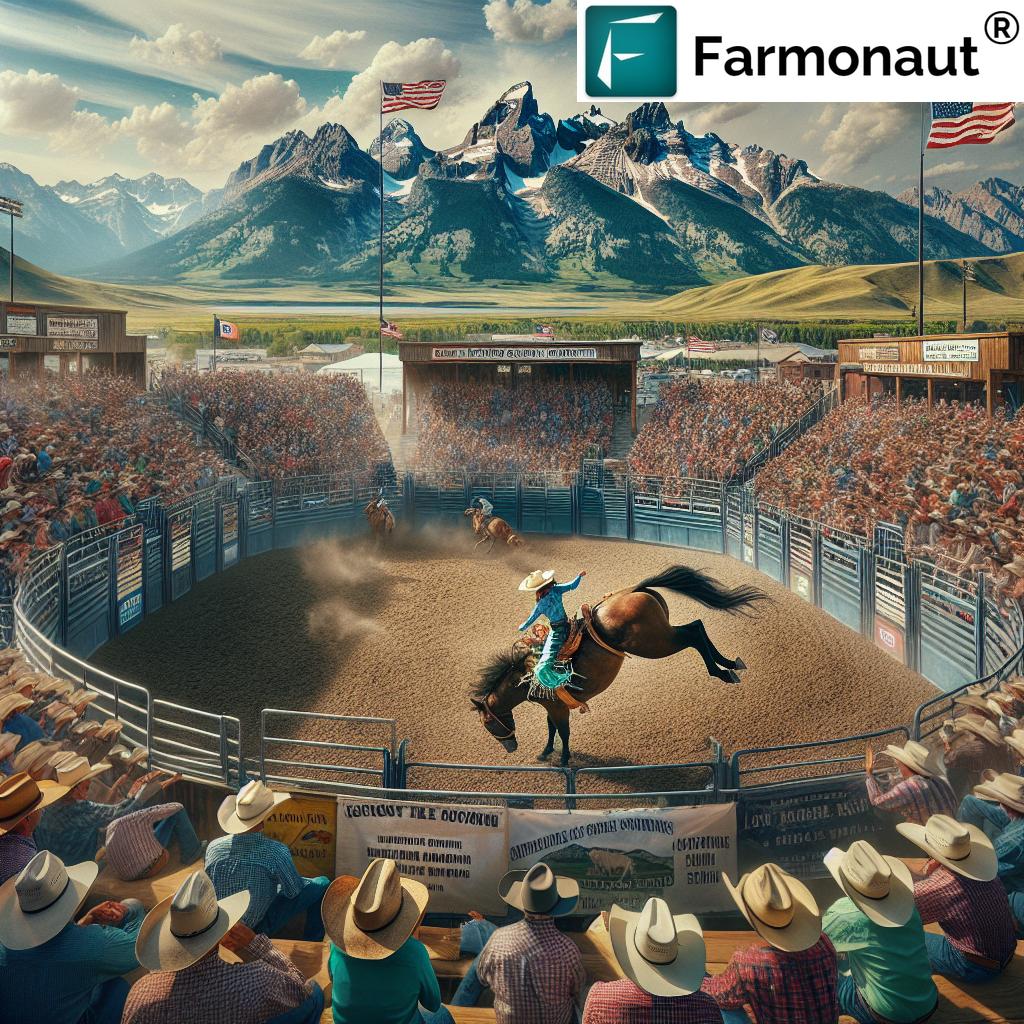Iowa Wetland Laws: 7 Powerful Impacts on Farmers and Cropland
“Over 900,000 acres of Iowa farmland are regulated under wetland laws, directly affecting crop insurance eligibility for farmers.”
Table of Contents
- Introduction: Wetlands, Law, and the Iowa Farming Landscape
- History of Iowa Wetland Laws & the Swampbuster Provision
- Swampbuster Provision: Tying Wetlands to Crop Insurance Eligibility
- 7 Powerful Impacts Iowa Wetland Laws Have on Farmers and Cropland
- The Iowa Wetland Determination Process: How Are Acres Classified?
- The Role of Lawsuits and Court Decisions in Wetland Regulation
- Comparative Table: Iowa Wetland Laws & Swampbuster Provision Impacts
- How Precision Agriculture Empowers Smart Land Use: Farmonaut’s Role
- FAQ: Iowa Wetland Laws, Swampbuster, and Farm Management
- Conclusion: Charting a Sustainable Path for Iowa’s Farmers & Wetlands
Introduction: Wetlands, Law, and the Iowa Farming Landscape
Iowa’s agricultural legacy is tightly interwoven with its landscape—the rich black soil, vast acres of corn and soybeans, and a resourceful farming community. But below the familiar rows of crops lies a complex regulatory system driven by Iowa wetland laws, Swampbuster provisions, and federal policies that directly determine how we farm, insure, and manage our land.
In this comprehensive guide, we’ll uncover the seven powerful impacts that these wetland laws have on farmers and cropland, with a sharp focus on how policies like Swampbuster dictate federal crop insurance eligibility, land use, and sustainable agricultural production.
From DELAWARE, Iowa—where even a seemingly dry patch of trees can decide the fate of millions in subsidies and insurance—to the wider Midwest, our discussion will explain why wetland conservation in agriculture is more relevant than ever. Together, we’ll explore how legal battles, evolving attitudes, and new precision farming technologies (like Farmonaut’s satellite-based farm management platform) are reshaping our future.
Let’s dive into the world where law meets land—and every acre counts.
History of Iowa Wetland Laws & the Swampbuster Provision
To truly understand today’s Iowa wetland laws, we must look to the past: Before 1800, the state’s northern counties were a mosaic of marshes and waterlogged acres. As the nation expanded westward and agriculture grew, these wetlands were viewed as obstacles—sooner drained than protected.
By the early 20th century, with the help of the government and county-driven drainage districts, more than 90 percent of Iowa’s original wetlands were converted to cropland. Underground tile drainage systems (known as tiling) transformed formerly flooded properties into some of the most productive farmland in the U.S.
Public attitudes, however, began to shift by the 1980s. Environmental concerns about soil erosion, water quality, and habitat loss led conservation groups to lobby for new protections—culminating in key federal laws from the 1985 Farm Bill:
- Swampbuster Provision: Tied eligibility for USDA loans, crop insurance subsidies, and program payments to the avoidance of wetland destruction.
- Sodbuster Provision: Discouraged soil erosion by restricting farming on previously untilled, highly erodible land.
These environmental programs remain cornerstones of modern federal agriculture policy—and the founder of wetland protection and farming rules across the Midwest.
What is the Swampbuster Provision?
The Swampbuster provision—formally Section 1221 of the Food Security Act of 1985—makes farmers ineligible for most federal farm program benefits, including subsidized crop insurance, if they drain, fill, or otherwise convert wetlands on their land for crop production.
- It does not prohibit draining wetlands on farmland, but farmers who do so cannot receive USDA benefits (such as price support, loans, insurance, or conservation program payments).
- This links environmental compliance directly to financial viability for the vast majority of Iowa farmers—over 95% of corn and soybeans grown here are subsidized or insured under the program.
Wetland protection and agricultural policy are now interdependent, as the fate of marshy acres and every farmer’s pocketbook are shaped by these federal rules.
“The Swampbuster provision has influenced land use decisions on more than 2,000 Iowa farms since its implementation.”
Swampbuster Provision: Tying Wetlands to Crop Insurance Eligibility
The most direct—and consequential—impact of Swampbuster is federal crop insurance eligibility.
- Under Swampbuster, if a property’s designated wetland is drained or filled for crop production, the farmer loses access to vital USDA programs—including insurance for all acres they own, not just those affected.
- This is especially critical in Iowa where weather volatility, market risk, and narrow profit margins make crop insurance subsidies and price supports a financial lifeline for most commercial farms.
- Ineligible farmers cannot receive:
- Risk Management Agency crop insurance supports
- Commodity subsidies and disaster relief payments
- Conservation cost-sharing grants
- Direct loans and operating credit
This direct connection between environmental compliance and economic survival is at the heart of every current court case and legal dispute over wetland laws and Swampbuster’s “fairness” to agricultural landowners.
7 Powerful Impacts Iowa Wetland Laws Have on Farmers and Cropland
Let’s break down the seven most significant effects that wetland protection laws—and particularly the Swampbuster provision—have on the agricultural industry and our farm communities in Iowa.
1. Defining What Acres Can Be Farmed (and What Cannot)
- Wetland determinations—conducted by the NRCS, a USDA agency—classify every relevant patch of farmland statewide.
- If soil, surface conditions, or vegetation indicate a spot is a wetland (even if dry part of the year!), it becomes a limited-use area for crop production.
- This often restricts what percentage of a tract can be planted each year, especially on larger parcels with multiple low-lying spots.
2. Federal Crop Insurance Eligibility Is Directly at Stake
- Any producer who cultivates or alters a protected wetland loses access to federal crop insurance—a step that can threaten farm survival in drought, flood, or price collapse years.
- For more details: Explore how Farmonaut supports crop loan and insurance monitoring.
3. Shaping Cropland Usability and Land Value
- A “wetland” label can reduce property value (since fewer acres are eligible for production).
- This limits what land can be mortgaged, refinanced, or leased, with implications for farm succession and estate planning.
4. Encouraging or Deterring Conservation Investments
- To remain eligible for federal benefits, farmers may participate in additional conservation programs—such as buffer strips, tree planting, or reduced tillage—to demonstrate their commitment to sustainable land management.
- Smart Use Case: Leveraging tools like Farmonaut’s carbon footprinting solutions allows users to track environmental impact and stay ahead on compliance.
5. Increasing Compliance Costs and Complexity
- Complying with NRCS wetland regulations can mean additional administrative time, consulting fees, and paperwork for landowners.
- Government designations—sometimes disputed in court—may take years to resolve, adding uncertainty for crop planning.
6. Shifting Community Dynamics and Downstream Effects
- Decisions about draining or preserving wetlands affect not only a single property but entire drainage systems shared among multiple farms.
- This can pit upstream and downstream neighbors against each other, especially as drainage patterns shift over time.
7. Supporting Environmental Outcomes and Sustainable Food Production
- Wetland conservation in agriculture has demonstrably reduced soil erosion, improved water filtration, and increased habitat for wildlife.
- This strengthens the long-term viability of agricultural production in Iowa’s challenging, weather-dependent landscape.
- For traceability and supply chain transparency, Farmonaut offers end-to-end blockchain-based tracking to guarantee environmentally responsible food production.
The Iowa Wetland Determination Process: How Are Acres Classified?
Understanding how wetlands are defined and enforced is key for every farmer, landowner, and agricultural advisor in Iowa.
- NRCS Mapping and Soil Analysis: The Natural Resources Conservation Service (NRCS) reviews soil, surface water indicators, and native vegetation, often cross-referencing with aerial and historical images.
- Size and Connectivity: Most Iowa wetland areas are small (0.5 to 10 acres) and not necessarily connected to a stream.
- Disputes and Appeals: Producers may request reevaluation or challenge a wetland determination in court, particularly if the land appears dry or was previously modified.
Crucially, USDA wetland regulations prioritize scientific criteria over surface appearance. Many protected wetlands “look dry” for much of the year but are still subject to Wetland protection and farming rules.
- Manage your operation at scale: Discover Farmonaut’s large-scale farm management software for operational oversight across thousands of acres and several properties.
- Optimize agricultural logistics: Fleet and resource management solutions from Farmonaut streamline fleet tracking for improved agricultural efficiency.
The Role of Lawsuits and Court Decisions in Wetland Regulation
Not all wetland designations go unchallenged. Iowa—like other states—sees recurring lawsuits and federal court cases contesting:
- The fairness of Swampbuster, especially for landowners who feel their property rights are limited without compensation.
- Whether a patch meets the technical wetland definition, given that many “wet areas” are seasonally dry.
- Whether Swampbuster is “coercive” by making crop insurance and federal benefits conditional on environmental compliance.
As recent legal trends suggest, Iowa’s wetland conservation in agriculture—and especially the Swampbuster provision—remain legally robust. Courts generally reaffirm the government’s right to condition subsidies on stewardship, even if this means some land stays out of production.
What Might Change?
Should legal efforts succeed in overturning or weakening Swampbuster, we could see hundreds of thousands of additional acres drained and converted to crops as market prices and farm economics dictate. At the same time, downstream and community impacts could result in new local conflicts, soil loss, and water management challenges affecting the entire agriculture industry.
For ongoing changes, data-driven technology can help monitor, plan, and adapt: Discover the Farmonaut Satellite API and developer documentation for integrating remote wetland and crop monitoring into your systems.
Comparative Table: Iowa Wetland Laws & Swampbuster Provision Impacts
| Law/Provision Name | Purpose/Description | Estimated Impact on Farmers (e.g., Compliance Costs, Restrictions) | Impact on Cropland Usability | Effect on Crop Insurance Eligibility | Sustainability/ Environmental Outcomes |
|---|---|---|---|---|---|
| Swampbuster (Food Security Act 1985) | Prevents use of drained wetlands for crop production when receiving federal benefit | Medium–high: wetland acres cannot be farmed; costs for wetland delineation and record-keeping | Reduces farmable acres by up to 10% in affected fields | Removes eligibility for 95%+ of major programs if violated | Significantly reduces erosion, improves water filtration, supports wildlife habitat |
| Sodbuster (1985 Farm Bill) | Discourages tilling highly erodible soils without conservation plans | Low–medium: requires new conservation plans and practice adoption | Little effect unless land is highly erodible | Non-compliance ends insurance/subsidy eligibility for the land area | Reduces soil erosion, encourages sustainable soil management |
| Section 404 Clean Water Act (Federal, 1972) | Requires permits for filling wetlands “connected to navigable waters” | Low: now only applies to select streams/rivers post-2023 | Minimal: affects <1% of Iowa farmland after Supreme Court ruling | Little to none for agricultural insurance | Historically broad environmental protections, now much narrowed |
| Iowa Code 455B (State Law) | Sets state-level requirements for water and wetland management | Low: Few direct farming restrictions beyond federal rules | Minimal: Usually overlaps with NRCS designation | Indirect, as penalties may affect farm contacts | Small net benefit for water quality |
How Precision Agriculture Empowers Smart Land Use: Farmonaut’s Role
With so much at stake—millions of dollars in insurance, finite farmland, and legal scrutiny—precision agriculture technology has become essential for managing wetlands and maximizing crop potential without violating protection rules.
How Does Farmonaut Support Iowa’s Farmers?
- Satellite-based Crop Monitoring: Farmonaut’s multispectral satellite imagery and NDVI indices help farmers monitor crop health, spot potential wetland regrowth, and plan planting schedules to comply with Swampbuster provision requirements.
- AI-Based Advisory: The Jeevn AI system provides real-time insights and advice based on weather, soil moisture, and field trends—enabling smarter responses to environmental programs and NRCS notifications.
- Blockchain Traceability: Transparent tracking of food and crop origin helps ensure supply chain compliance with wetland protection and farming standards.
- Carbon Footprinting: Real-time impact tracking empowers producers to document conservation benefits and carbon savings for market and policy incentives.
- Compliance-Ready Reporting: Detailed, location-based analytics simplify proof of compliance for USDA wetland regulations and federal inspections.
What’s more, Farmonaut’s affordable subscription-based services mean that both smallholders and large-scale landowners can access the latest farm management insights—without expensive equipment or IT expertise.
For advanced users and developers, our robust API (see the API here) and detailed API documentation enable integration of satellite-data-driven crop and wetland management into any existing agricultural workflow.
FAQ: Iowa Wetland Laws, Swampbuster, and Farm Management
Q1: Can I drain or till a wetland area on my property for crops?
Technically, yes—you may use any method to convert wetlands on your property. However, doing so makes you ineligible for USDA programs such as federal crop insurance subsidies and farm loans for all acres you operate in Iowa. Violating Swampbuster is a high-risk decision for most farmers.
Q2: How does the government determine if a patch is a wetland?
The NRCS uses soil, vegetation, topography, and hydrologic data, along with satellite and aerial imagery, to classify wetlands. Even if the area is dry part of the year or lacks visible water, it may qualify based on underlying characteristics.
Q3: If I lose benefits, can I ever get them back?
Eligibility may be restored if the converted wetland is restored or if a successful appeal reveals an error in the original determination. You may also apply to the NRCS for reconsideration if environmental changes occur.
Q4: Do these laws only affect Iowa?
No. While Iowa is a leading state for wetland conversion and farm production, similar federal wetland policies—and Swampbuster—apply to all fifty states.
Q5: How can I monitor my farm’s eligible acres?
Affordable, easy-access remote monitoring is now feasible through solutions like Farmonaut’s web and mobile platform, which enables satellite imagery, compliance visualization, and crop health monitoring on every acre.
Q6: What happens if Swampbuster is repealed or weakened?
The immediate impact would probably be a significant increase in wetland draining, field expansion, and greater flood risk for downstream farms. This would have long-term sustainability consequences, and likely spawn new state- and community-level conflicts over shared water rights and soil preservation.
Conclusion: Charting a Sustainable Path for Iowa’s Farmers & Wetlands
As we face new pressures—from commodity price swings to climate-driven weather extremes—the intersection of wetlands law, crop insurance eligibility, and sustainable agricultural land use in Iowa will only become more important.
The next chapter for our farmers depends not just on policy or law, but on access to actionable data and innovative tools. Farmonaut’s mission is to empower all farmers—from smallholders in northern Iowa to agribusinesses managing thousands of acres—by providing cost-effective, real-time data and insights for every field, every season.
Whether you’re managing a few acres, optimizing large-scale agricultural land use in Iowa, or seeking to meet compliance under changing USDA wetland regulations, our commitment is to sustainability, productivity, and transparency—helping stewards of the land thrive in a world where law, environment, and technology are deeply connected.
Explore the future of wetland protection and farming in Iowa with us—using precision data, smarter tools, and a vision for shared prosperity.


